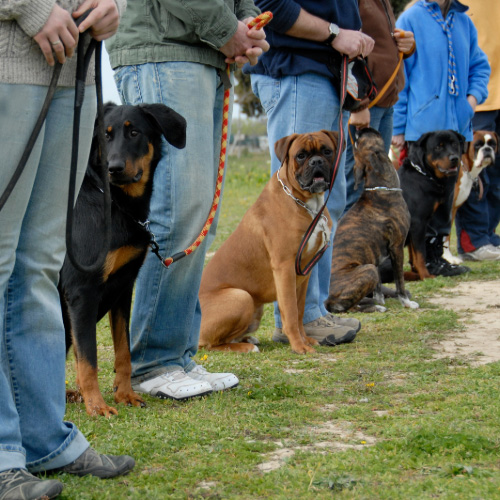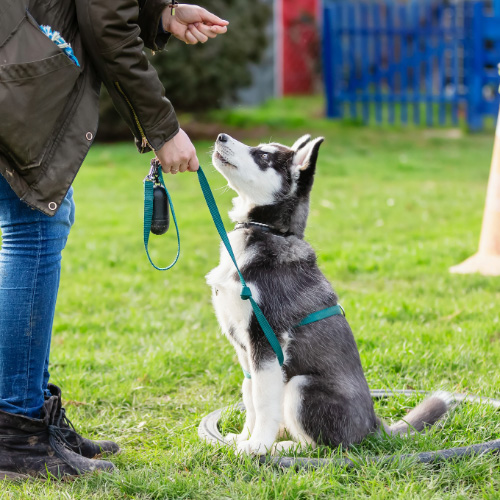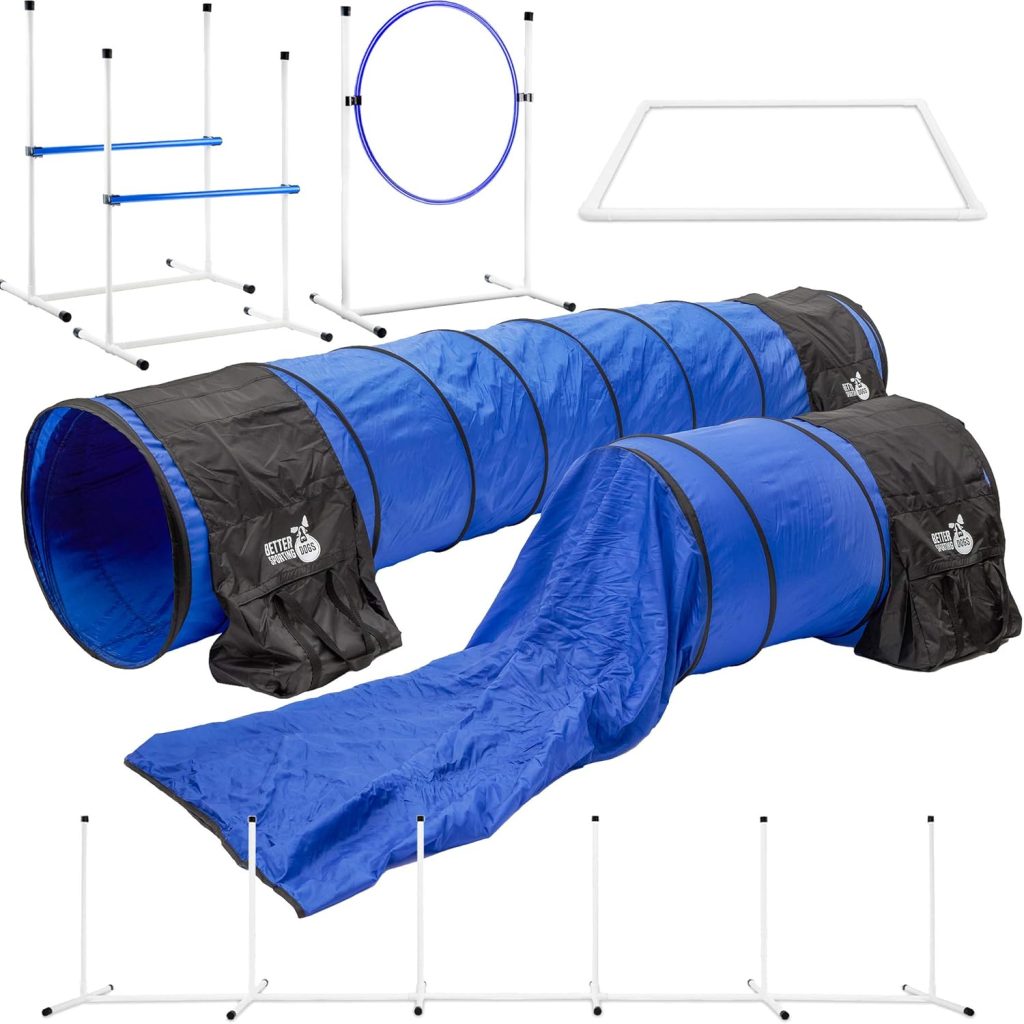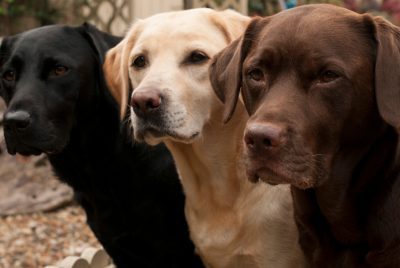Mastering the Art of Training Your Dog
Post Disclaimer
We may earn a commission for purchases made using our links. Please see our Disclaimer to learn more.
Effective Strategies for Training Your Dog
Key Highlights
- Start early: The sooner you begin training your dog, the better.
- Be consistent: Dogs thrive on routine, so consistent training schedules and commands are crucial.
- Utilize positive reinforcement: Reward-based training, using treats and praise, is highly effective and helps build a strong bond.
- Keep it fun: Short, engaging sessions are more enjoyable for you and your dog.
- Seek professional help if needed: Don’t hesitate to consult a certified dog trainer if you encounter challenges.
Introduction
Dog training is very important for being a responsible pet owner. It helps create a strong bond with your furry friends and turns them into a “good dog.” Positive reinforcement methods, like giving treats and praise, are important for successful dog training.
Understanding the Basics of Dog Training
Effective dog training starts with basic obedience. This includes teaching key commands like “sit,” “stay,” “come,” and “heel.” Proper training keeps your dog safe and helps it feel good. It allows it to move around the world with confidence.
Training goes beyond basic obedience. It involves fixing behavior problems, socializing your dog, and teaching fun tricks. To be successful in training, you need to be consistent and patient and know how dogs behave.

The Importance of Consistency and Patience
In dog training, consistency is very important. Dogs do best when things are the same. You should keep your commands, training times, and rewards steady. It’s like learning a new language with changing rules – it can be very confusing. This is how dogs feel, too.
Also, patience is key. Dogs, like people, learn at different speeds. Some dogs pick up commands fast, while others need more time and practice. Don’t rush them. This can make both you and your dog feel frustrated.
Always remember that dog training is a journey, not a race. Enjoy the small wins, stay patient during tough times, and keep a positive attitude all along the way.
Essential Tools and Resources for Training
Before you start your dog training journey, it’s good to gather a few important tools and resources:
- Leash and Collar/Harness: A well-fitting collar or harness and a strong leash are must-haves for training. They help keep control and ensure safety during walks and training sessions.
- Crate: A crate can be a safe place for your dog. It helps with potty training and stops destructive behaviors when you can’t watch them.
- Treats: Use high-value treats that your dog loves. These treats are great motivators during training.
There are many resources to help with your training. You can look into dog training books, get advice from a dog trainer, or join obedience classes.
Preparing for Training: What You Need to Get Started
Preparing for your dog’s training is not just about getting supplies. It would help if you had the right mindset. Train with a positive and patient attitude. Remember, it is a process that builds your bond with your dog.
Before each training session, take a few minutes to reduce distractions. Turn off the television, put away tempting toys, and find a quiet place. This way, your dog can focus on you and the task.
Choosing the Right Training Equipment
Choosing the right training gear for your dog is important. It should match your dog’s size, breed, and personality. Your training goals are also a big factor.
For potty training, you will need a crate, puppy pads, and a cleaner that removes stains and smells.
Pick a light leash and a collar or harness that fits well when starting leash training. A harness is suitable for dogs that pull a lot. It spreads out the pressure and helps their neck.
You might need special gear to participate in dog sports or advanced training. This could include agility obstacles, clickers, and long lines.
Setting Up a Training Schedule
Having a regular training schedule is vital to success, especially for puppies and new dogs who are getting used to their surroundings. Puppies have shorter attention spans and do better with several training sessions daily. These sessions should generally last no more than 10-15 minutes.
As your dog learns and improves, you can slowly lengthen the training sessions. Still, it is important to focus on the quality of the training, not just the length. A focused 15-minute session is much better than a long hour of training that includes distractions and a lack of interest.
Be sure to include training in your daily activities. You can practice commands while walking, eating, or playing. This regular reinforcement helps the dog remember what it has learned.
Step-by-Step Guide to Training Your Dog
Training your dog takes a step-by-step method. This means you should break down challenging behaviors into small, manageable parts. Begin with basic commands. As your dog learns, add more complicated tasks. Keep the training sessions short. Make them fun and rewarding.
Dogs learn by making connections. It’s essential to be clear about what you want. Pair specific cues or commands with the actions you want your dog to take. Always use positive reinforcement to motivate and encourage your furry friend.
Step 1: Establishing Basic Commands
Start by teaching basic commands like “sit,” “stay,” “come,” and “down.” Clicker training is a helpful method that uses positive reinforcement. The clicker marks the exact moment when your dog does what you want.
When introducing a new command, use a clear and steady verbal cue. For instance, say “sit” while gently helping your dog sit down. When they are in the correct position, click the clicker immediately and give them a treat.
Doing things over and using positive reinforcement to help your dog learn these commands is important. Practice often in short, fun sessions. Adding distractions or having your dog “stay” longer can make it more challenging.
Step 2: Implementing Positive Reinforcement Techniques
Positive reinforcement is key to successful dog training. It means rewarding good behaviors to build a stronger bond with your dog. You can use treats, praise, and petting to encourage your pet to learn.
When your dog follows a command, give praise right away. Use an excited tone and say, “Good dog!” along with a small treat. This helps your dog link the command to something nice.
Being consistent is very important for positive reinforcement. At first, reward every good attempt. As your dog gets better, you can start to reduce the treats. Later, you can use praise, petting, or their favorite toy instead.
Advancing Your Dog’s Training
Once your dog knows the basic commands, you can move on to more advanced training. These challenges help keep your dog’s mind active, reduce boredom, and strengthen your bond.
Try trick training, agility courses, or dog sports like obedience, rally, or scent work. These activities can give your dog good mental stimulation and help them stay healthy and happy.
Introducing More Complex Commands
Advanced commands challenge your dog mentally and physically. This gives them a greater feeling of success. You can add commands like “leave it,” “drop it,” “wait,” and “heel” to build on basic obedience.
These commands help your dog understand control, focus, and how to listen. For example, “leave it” stops them from grabbing food or getting distracted. “Drop it” teaches them to let go of things.
Introduce these commands step by step. Start with low distractions and make it harder as your dog learns. Always use positive reinforcement. Reward their success with treats and praise.
Socialization and Behavior Training
Socialization is very important for raising a happy and confident dog. It means letting them meet different people, visit various places, and experience different sights and sounds. This helps them make good connections with the world around them.
Behavior training helps solve common problems like excessive barking, jumping, or chewing. It aims to change unwanted actions while supporting good behaviors, leading to a better home life for you and your dog.
If you want an organized socialization and training program, you might want to look into the Canine Good Citizen program. The AKC recognizes it and focuses on responsible dog ownership. It sets clear standards for good canine citizens.
Conclusion
In conclusion, good dog training needs consistency, patience, and the right tools. You should set a training schedule. Use positive reinforcement techniques and move on to more complex commands as your dog learns. Don’t forget to focus on socializing and behavior training for a well-rounded approach. You can form a strong bond with your dog with dedication and love. This will help them be happy and well-behaved companions. If you have questions or want more help, check online dog training courses or ask for professional help. Happy training!
Frequently Asked Questions
How Long Does It Take to Train a Dog?
The time it takes to train a dog depends on several factors, such as age, breed, and temperament. Young puppies can learn basic obedience commands pretty fast. However, older dogs or those with behavior problems before may need more time and patience.
Can Old Dogs Learn New Tricks?
You can teach an older dog new tricks, even if they learn a bit more slowly. They can gain a lot from training sessions. It is essential to use positive reinforcement and be consistent during these sessions.
What If My Dog Is Not Responding to Training?
If your dog does not respond to training, take a moment to review your method. Make sure you are using proper training techniques. Be patient and focus on positive reinforcement instead of tough corrections. Talking to a certified dog trainer can give you helpful ideas and personal advice.
How Can I Deal with Behavioral Issues?
Addressing behavioral problems like excessive barking, aggression, or fear requires several methods. Positive reinforcement techniques can help. Managing the environment and applying training tips to the problem can also change unwanted behaviors.
Are Online Dog Training Courses Effective?
Online dog training courses can be an easy way to get training tips and advice. They might not be as good as in-person dog training classes, but they provide helpful resources. These resources talk about different parts of dog training, from basic obedience to advanced commands.





